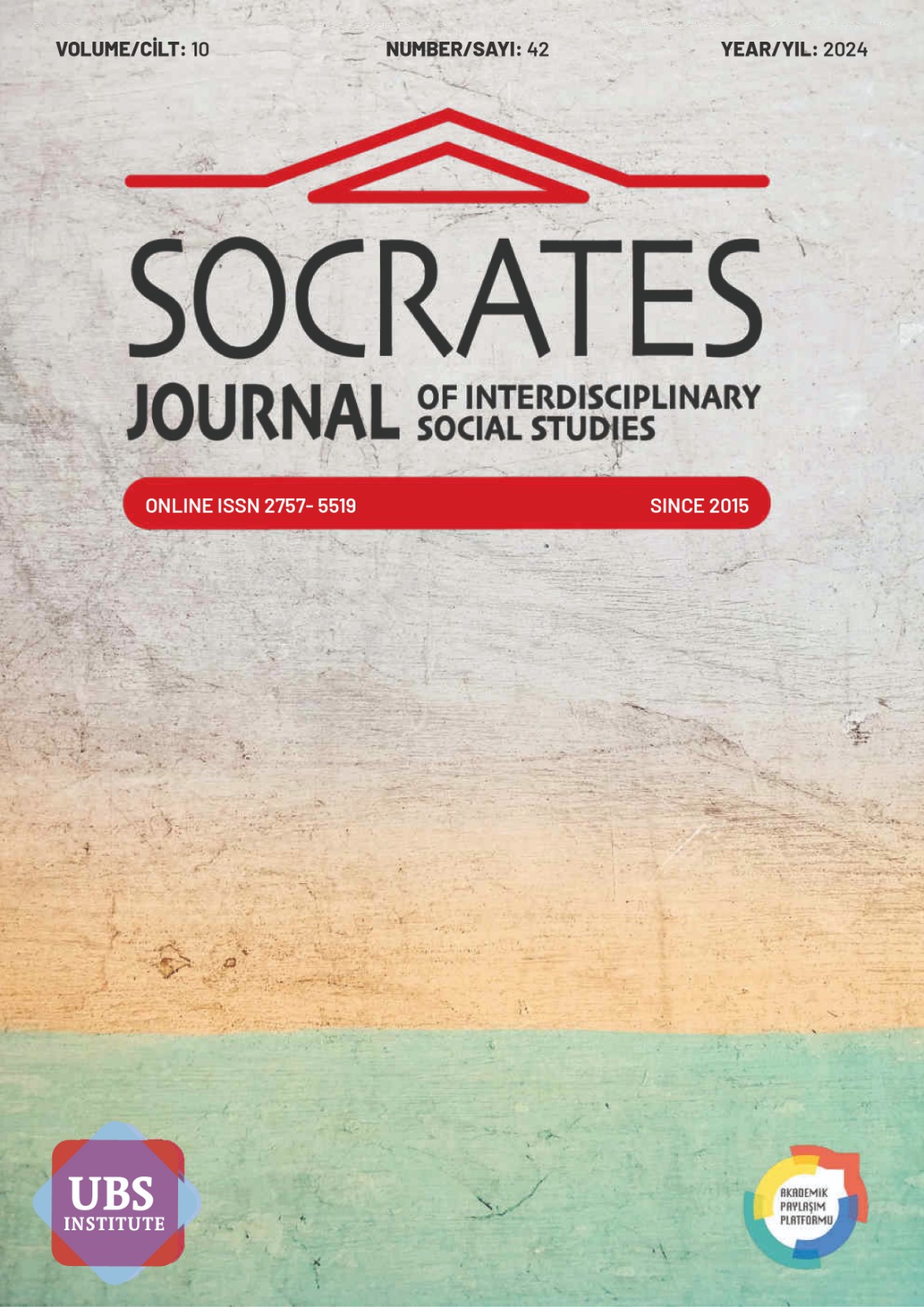OPINIONS OF SPECIAL EDUCATION AND PRESCHOOL TEACHERS PROVIDING REVERSE INCLUSION EDUCATION
OPINIONS OF SPECIAL EDUCATION AND PRESCHOOL TEACHERS PROVIDING REVERSE INCLUSION EDUCATION
DOI:
https://doi.org/10.5281/zenodo.11564573Keywords:
Keywords: Reverse Inclusion, Preschool, Special Education In addition, all of the teachers stated that reverse mainstreaming practices should be widespread throughout the countryAbstract
The aim of this study is to determine the opinions of special education and preschool teachers who provide reverse inclusive education about reverse inclusive education. In the research, it was planned in the ‘case study’ model, one of the qualitative research patterns. The sample of the study consisted of 8 special education and 8 pre-school teachers working in a pre-school education institution providing reverse mainstreaming education affiliated to the Ministry of National Education in Altındağ district of Ankara province, which was selected by "criterion sampling", one of the purposive sampling techniques. A semi-structured interview form prepared in line with the literature review and presented to experts was used in the research. The interview form includes 11 questions, one regarding the participants' demographic characteristics and ten related to reverse inclusion education. A semi-structured interview technique was used to obtain teachers' views on reverse inclusion education, and the data obtained from the semi-structured interview form were subjected to content analysis. As a result of the content analysis, themes and sub-themes related to these themes were created. According to the findings obtained, it was determined that the majority of special education and preschool teachers did not receive any in-service training on reverse inclusion education after starting their profession. Teachers generally stated that they continued their education in reverse inclusion based on the information they received during their undergraduate education. In this context, teachers stated that they used methods such as tracking publications, collaboration, experience, monitoring reverse inclusion practices, and identifying missing topics while improving themselves in reverse inclusion education. Teachers also mentioned that they supported students' communication processes in reverse inclusion classrooms by using different methods for child-teacher and child-child communication, used various methods to meet students' different learning needs, demonstrated flexibility in daily plans for reverse inclusion practices, effectively used feedback processes, and maintained continuous communication with families. Teachers stated that the main reasons for adopting the reverse inclusion approach were individual differences, equal opportunities, and the inadequacy of inclusion. In addition, all of the teachers stated that reverse mainstreaming practices should be widespread throughout the country
References
Arı, H. (2015). Bir okul öncesi özel eğitim kurumunda tersine kaynaştırma uygulamasının ve ilkokula hazırlığa etkilerinin incelenmesi. Yayınlanmamış Yüksek Lisan Tezi. Eğitim Bilimleri Enstitüsü, Necmettin Erbakan Üniversitesi. Konya.
Aslan Bağcı, Ö., & Efitli, E. (2019). Özel eğitim okullarında görev yapan öğretmenlerin iletişim becerilerinin incelenmesi. Turkish Studies Educational Sciences, 14 (3), 335-349.
Babaoğlan, E., & Yılmaz, Ş. (2010). Sınıf öğretmenlerinin kaynaştırma eğitimindeki yeterlikleri. Kastamonu Education Journal, 18 (2), 345-354.
Broderick, A., MehtaParekh, H., & Reid, D. (2005). Differentiating instruction for disabled students in inclusive classrooms. Theory Into Practice, 44 (3), 194‐202.
Can, E., Işık Can, C., & Nikolayidis, U. (2012). ehber öğretmenlerin kaynaştırma eğitimi uygulamalarına yönelik görüşlerinin belirlenmesi”. 21. Ulusal Eğitim Bilimleri Kongresi. Marmara Üniversitesi, Atatürk Eğitim Fakültesi. İstanbul, Türkiye, 40, 12-14 Eylül.
Cook, L. & Friend, M. (2010). The state of the art of colllaboration on behalf of Student with disabilities. Journal of Educational and Psychological, 20, 1-8.
Çetindağ, (2011). Okul öncesi eğitimde iletişim. G. Uyanık Balat ve H. Bilgin (Eds.), Okul Öncesi Eğitimde Sınıf Yönetimi, Ankara: Eğiten Kitap, 203-220.
Eripek, S. (1996). Zihinsel engelli çocuklar. Eskişehir: Anadolu Üniversitesi Eğitim Fakültesi Yayınları. Akt. Cavkaytar, A. (1999). Zihin engellilere özbakım ve ev içi becerilerinin öğretiminde bir aile eğitimi programının etkililiği. Eskişehir: Anadolu Üniversitesi Yayınları.
Guralnick M. J. (2001). A framework for change in early childhood inclusion. In Early Childhood Inclusion: Focus on Change, (ed M. J. Guralnick), pp. 3–35. Brookes, Baltimore, MD
Nayır, F., & Karaman Kepenekci, Y. (2013). Kaynaştırma öğrencilerinin haklarına ilişkin sınıf öğretmenlerinin görüşleri. Eğitim Bilimleri Araştırmaları Dergisi, 3 (2), 69-89
Sarı, H., & Bozgeyikli, H. (2003). Öğretmen adaylarının özel eğitime yönelik tutumlarının incelenmesi: karşılaştırmalı bir araştırma. Selçuk Üniversitesi Sosyal Bilimler Enstitüsü Dergisi, 9, 183-203.
Sucuoğlu, B. (2006). Etkili kaynaştırma uygulamaları. Ankara: Ekinoks yayınları
Uysal, A. (1995). Öğretmen ve okul yöneticilerinin zihin engelli çocukların kaynaştırılmasında karşılaşılan sorunlara ilişkin görüşleri. Yayınlanmamış Yüksek Lisans Tezi. Anadolu Üniversitesi Sosyal Bilimler Enstitüsü.
Yıldırım, A., & Şimşek, H. (2018). Sosyal bilimlerde nitel araştırma yöntemleri. Seçkin Yayıncılık.
Downloads
Published
How to Cite
Issue
Section
License
Copyright (c) 2024 Socrates Journal of Interdisciplinary Social Studies

This work is licensed under a Creative Commons Attribution 4.0 International License.


